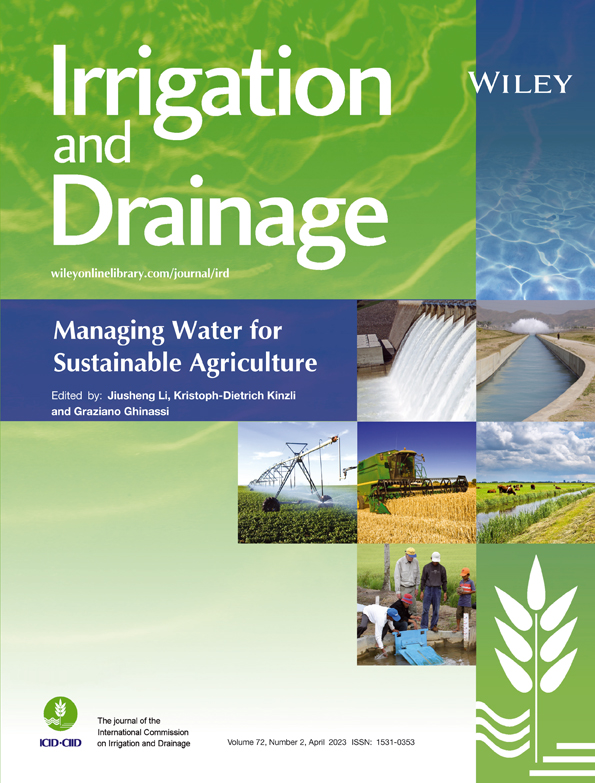Optimization and numerical simulation of the internal flow field of water–pesticide integrated microsprinklers
Article title in French: Optimisation et simulation numérique du champ d'écoulement interne des microsprinklers intégrés eau/pesticides
Abstract
enA new type of water–pesticide integrated microsprinkler has been developed in this study. Microsprinklers can irrigate crop roots to meet the irrigation index demand under low-pressure conditions and apply pesticides on the backs of crop leaves to meet the spraying pesticide index demand under medium-pressure conditions. In this paper, the structure and working principle of the water–pesticide integrated microsprinkler are discussed, and the key structural parameters are the number and diameter of the small round holes and the number and width of bevel grooves. Computational fluid dynamics (CFD) numerical simulations were performed to analyse the influence and variation in the key structural parameters on the microsprinkler flow field. The optimized structural parameters of the microsprinkler were determined: The outlet nozzle diameter was 3 mm, with three small round holes of 2 mm diameter and three bevel grooves of 0.8 mm width. The hydraulic performance of the optimized sprinkler and original sprinkler (outlet nozzle diameter was 2.5 mm, with two small round holes of 3 mm diameter and four bevel grooves of 1 mm width) were compared under different working pressure conditions. The results showed that the wetted radius and uniformity coefficient of the optimized sprinkler increased by 23% and 16%, respectively.
Résumé
frun nouveau type de microarrosage intégré eau/pesticides A été mis au point dans le cadre de cette étude. Les microarroseurs peuvent irriguer les racines des cultures pour répondre à la demande de l'indice d'irrigation dans des conditions de basse pression et appliquer des pesticides sur le dos des feuilles des cultures pour répondre à la demande de l'indice de pulvérisation de pesticides dans des conditions de pression moyenne. La structure et le principe de fonctionnement du microarrosage intégré eau/pesticide ont été discutés dans cette étude, et les paramètres structuraux clés étaient le nombre et le diamètre des petits trous ronds et le nombre et la largeur des rainures coniques. Dans cette étude, des simulations numériques CFD ont été effectuées pour analyser l'influence et la variation des paramètres structuraux clés sur le champ d'écoulement des microsprinklers. Les paramètres structuraux optimisés du microarrosage ont été déterminés: le diamètre de la buse de sortie était de 3 mm, avec 3 petits trous ronds de 2 mm de diamètre et 3 rainures coniques de 0,8 mm de largeur. Les performances hydrauliques de l'arrosage optimisé et de l'arrosage d'origine (diamètre de la buse de sortie était de 2,5 mm, avec 2 petits trous ronds de 3 mm de diamètre et 4 rainures coniques de 1 mm de largeur) ont été comparées dans différentes conditions de pression de travail. Les résultats ont montré que le rayon mouillé et le coefficient d'uniformité de l'arrosage optimisé augmentaient respectivement de 23% et 16%.
Open Research
DATA AVAILABILITY STATEMENT
Data available on request from the authors.




